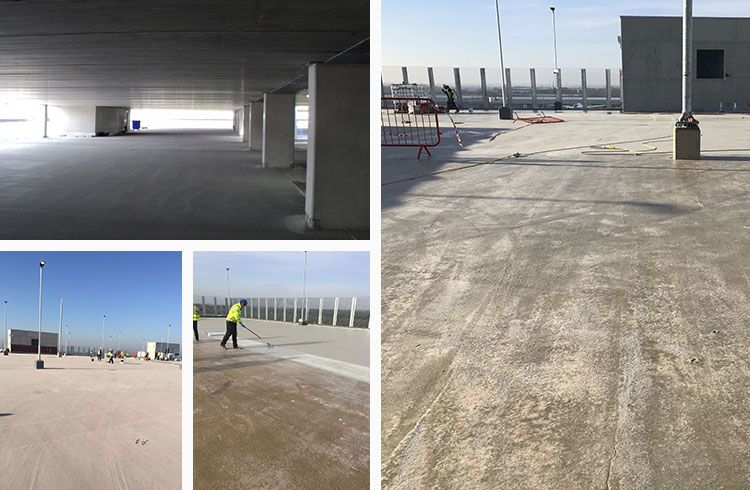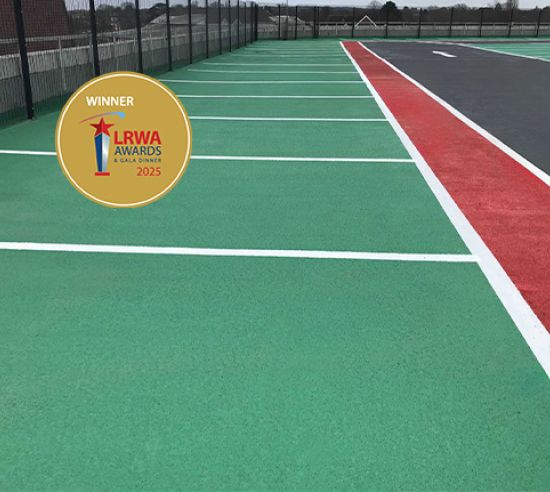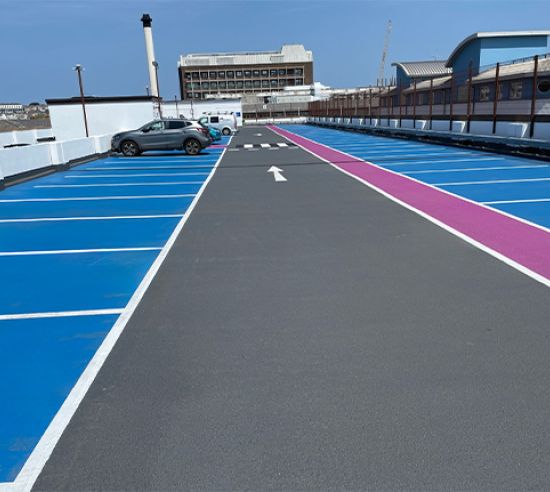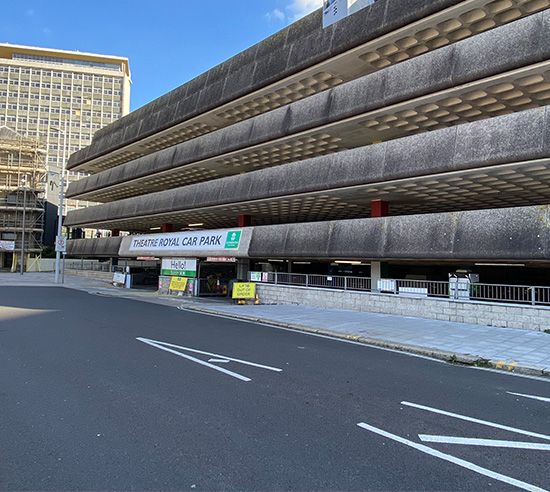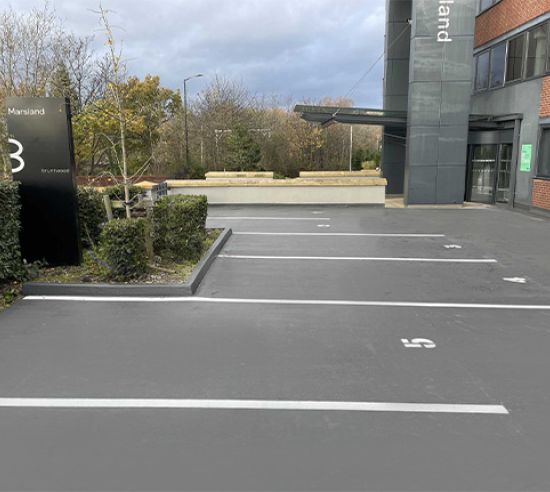Key points
- 10,000m² of Triflex ProPark waterproofing applied to the top deck of car park between November and March despite cold temperatures
- Car park provides 3,800 vital car parking spaces for rapidly expanding airport
- System accredited to EN 1504-2 to provide highest levels of performance and crack bridging technology to ensure long life
- Part of Manchester airport expansion programme that will see passenger capacity for Terminal 2 rise from 27 million to 55 million visitors per year
The challenge
With rising numbers of passengers, Manchester airport is investing £1bn to more than double the size of Terminal 2 as part of the airport’s plans to increase its passenger capacity from 27m to 55m per year.
Part of the programme will see a brand new 3,800 space car park created for the increase in passengers. Phase one of the building programme had a deadline of April 2019 with phase 2, a further car park, due to be completed by November 2019; but the main contractors wanted to bring the phase 2 completion forwards to April 2019, 6 months ahead of schedule.
Due to some unrelated delays, work on waterproofing the car park top deck for phase 2 could not begin until November 2018. This ruled out most cold applied liquid waterproofing systems, especially those based on polyurethane (PUR) due to the expected cold and wet winter weather. Such systems would need the concrete substrate to be at least 9°C and would take 12 hours or more to cure before it was fully cured. Finding an available weather window when such a system could be applied could prove impossible through winter.
The specified system also had to meet strict performance criteria to EN 1504-2 so that it would provide a durable waterproofing system, protecting the concrete structure for years to come and a safe durable floor, for the millions of vehicles and pedestrians that will use it every year. As part of this criteria, it had to demonstrate the highest crack bridging technology available to cope with any movement in the structure.
Lastly, hard-wearing line markings would need to be applied to clearly designate vehicle parking areas, direction of travel and pedestrian walkways for safety.
The solution
Approved Contracting Partner Mike Thelwell Flooring proposed using the Triflex ProPark system. It meets the necessary EN 1504-2 accreditation and dynamic crack bridging requirements. Based on PMMA technology, the system can be applied at temperatures down to 0°C. This allows the system to be applied in shorter weather windows between rain or snow, maximising the available installation time. It cures in just one hour allowing it to be overcoated or open to foot traffic quickly, ensuring rapid progress on-site.
Exposed ramps up to the top deck had emery aggregate added to aid vehicle grip and the parking areas were finished in a darker colour to the driving areas to help visually segregate them. Markings were applied using Triflex Preco Line 300 for bays and wayfinding, and Triflex Cold Plastic for line markings, providing a long term and clearly marked solution for parking, traffic direction and pedestrian walkways.
Says Mike Thelwell, from Thelwell Flooring: “The only way that the waterproofing could be completed during the winter months was by using a Triflex PMMA based system, it would have been impossible with a polyurethane (PU) system. Even using this PMMA system there were times when the temperature of the concrete on the top deck was below freezing and we had to use large scaffold canopies with electric heaters to maintain progress during particularly cold periods.
“Even if an area did get damaged due to moisture, it was easy to repair as a patch could simply be cut out and then a new layer applied over the top.”

